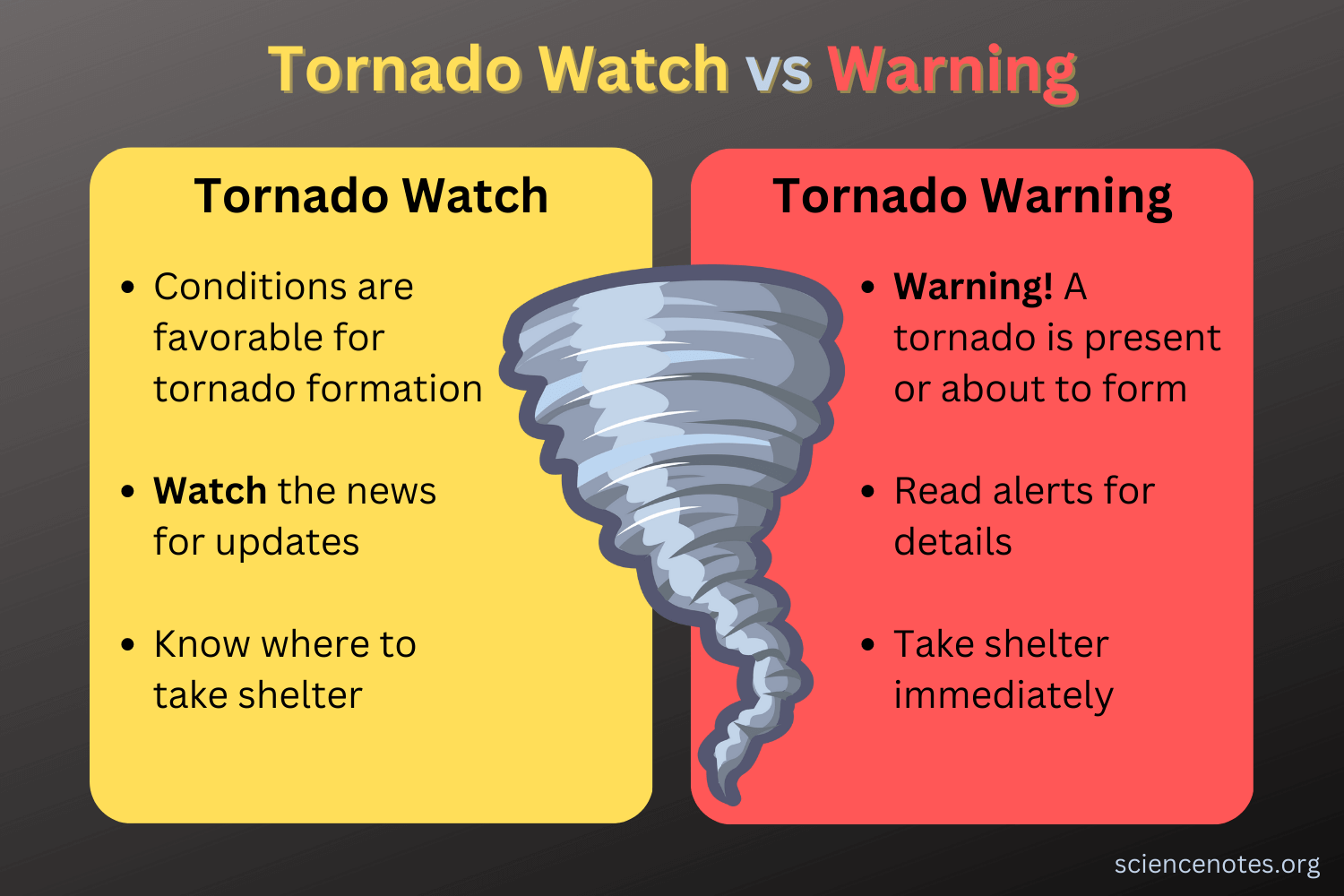What is the difference between a tornado warning and a tornado watch? If you’ve ever lived in an area prone to severe weather, you’ve likely heard these terms before. But what do they mean, and how do they differ? In this article, we will explore the distinctions between a tornado warning and a tornado watch, and why it’s important to understand them.
**Tornado Warning vs. Tornado Watch: Understanding the Difference**
When it comes to severe weather, accurate and timely information can save lives. A tornado warning and a tornado watch are both issued by the National Weather Service (NWS) to alert the public about possible tornado activity. However, there are key differences between the two:
Tornado Watch: Be Prepared
A tornado watch is issued when weather conditions are conducive to the formation of tornadoes. During a tornado watch, it means that tornadoes are possible in the designated area. It is important to note that a tornado watch is not a direct prediction of tornadoes; rather, it serves as a heads-up to the public and allows them to be prepared and stay vigilant.
What to do during a tornado watch:
– Stay informed: Keep up to date with the latest weather forecasts and stay tuned to local news stations or weather apps for any updates or changes in the weather conditions.
– Prepare your emergency kit: Ensure you have an emergency kit ready with essential items such as food, water, flashlights, batteries, a first aid kit, and a portable weather radio.
– Secure your property: Take necessary precautions to secure outdoor furniture, vehicles, and any loose items that could become projectiles in high winds.
– Identify safe areas: Determine the safest areas in your home or workplace where you can seek shelter during a tornado warning. The ideal location is a small, windowless room on the lowest level, such as a basement or storm shelter.
Tornado Warning: Take Immediate Action
A tornado warning, on the other hand, is a more urgent alert issued when a tornado has been detected or is imminent. This means that a tornado has been spotted by a trained spotter, observed on radar, or both. When a tornado warning is issued, it is crucial to take immediate action to protect yourself and your loved ones.
What to do during a tornado warning:
– Seek shelter immediately: Move to your predetermined safe area without delay. If you are outside or in a vehicle, seek shelter in the nearest sturdy building. If that is not an option, lie flat in a low-lying area and cover your head with your arms.
– Stay away from windows: Protect yourself from flying debris and shattered glass by staying away from windows and seeking shelter in an interior room.
– Monitor the situation: Continue to stay informed and monitor updates from the NWS or local authorities. Be prepared to quickly adapt your plan if necessary.
– Do not use elevators: If you are in a high-rise building, avoid using elevators during a tornado warning. Instead, take the stairs to reach the lowest level of the building.
Frequently Asked Questions
Q: How long do tornado warnings and watches usually last?
A: The duration of tornado warnings and watches can vary depending on the weather conditions. Tornado watches typically last for several hours, while tornado warnings are usually issued for a shorter period, averaging around 30 minutes to an hour. It is essential to stay alert and monitor the situation until the all-clear is given.
Q: Can tornadoes occur outside of a tornado watch or warning?
A: Yes, tornadoes can occur even in the absence of a tornado watch or warning. Weather conditions can change rapidly, and tornadoes can form without any prior indication. This is why it is crucial to stay informed about the weather and be prepared, regardless of whether a watch or warning has been issued.
Q: What should I do if I am in a mobile home during a tornado warning?
A: Mobile homes are particularly vulnerable to tornadoes due to their lightweight construction. If you are in a mobile home during a tornado warning, evacuate and seek sturdier shelter immediately. If there is no time to evacuate, move to the lowest level of your home and take cover in a small, windowless interior room or closet.
Final Thoughts
Understanding the difference between a tornado warning and a tornado watch is crucial for your safety during severe weather events. A tornado watch serves as a warning to be prepared, while a tornado warning requires immediate action to protect yourself from an imminent tornado. Stay informed, have a plan, and be ready to take shelter quickly when severe weather threatens. Remember, it’s always better to be safe than sorry.
*Disclaimer: This information is not intended as a substitute for professional advice. The author and OpenAI assume no responsibility for any damages or consequences arising from the use of this information.*
